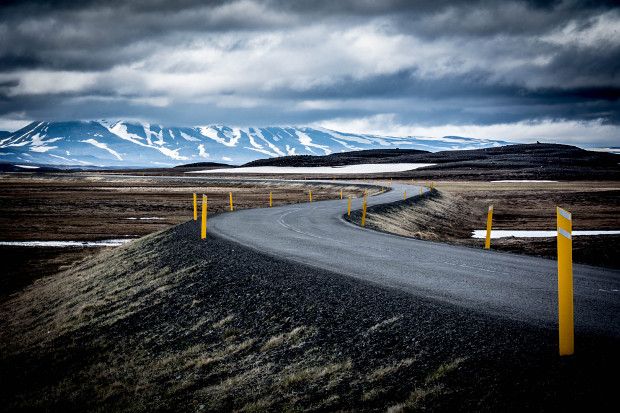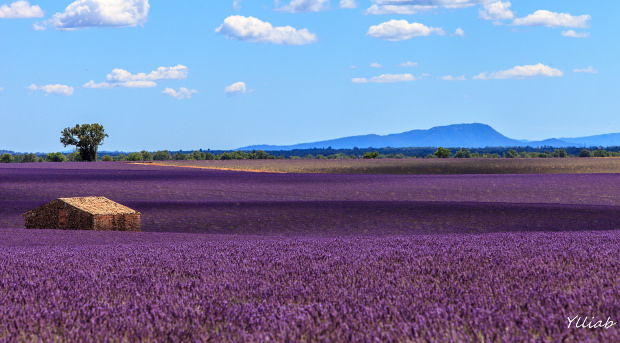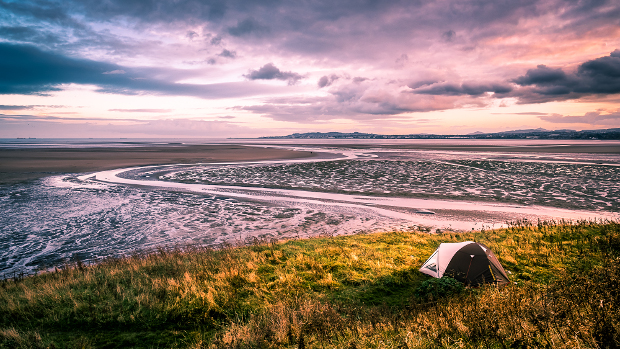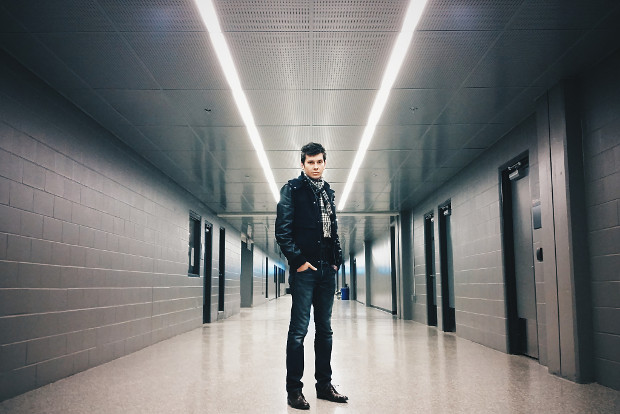Master the lines and curves in your images to guide the viewer’s eye through the scene, adding depth and interest.
One of the most powerful ways to engage your viewer is by making good use of the lines in your scene. They can be used to guide the viewer through the shot, draw their attention to the main subject or create a sense of depth and perspective.
Leading lines are one of my favourite composition techniques because they’re found absolutely everywhere. With a bit of forethought you can incorporate them into any photo to instantly boost its impact and visual appeal.
What are leading lines?
When we look at a photo our eyes are naturally drawn to the lines within it, and we tend to follow them to see where they go. In other words, the lines are “leading” our gaze through the photo.

The jetski trail guides you across the image from left to right. Image by Silentmind8.
Leading lines can be natural (such as a river or valley) or man-made (such as a road or fence). Anything with a well-defined edge can be used as a leading line.
Leading lines are great for producing several effects:
- Guiding the viewer’s eyes through the photo, helping them explore the whole scene.
- Drawing attention to the main subject or focal point of the shot.
- Adding depth and a sense of perspective to make the scene feel more “real” and three dimensional.
- Creating an interesting subject in their own right, particularly in abstract photos.
Despite being such a simple technique, leading lines are extremely versatile, and can enhance most photographs.
Finding and using leading lines
Almost every photograph will contain lines in some form, so the main challenge is remembering to look out for them. Once you get into the habit of spotting them, you can begin to use them intelligently to enhance your shots.

I’ve found that the easiest way to spot leading lines is through your camera’s viewfinder or LCD screen. This flattens the scene, making the lines stand out and seem much more obvious.
Once you’ve spotted the lines in your scene, it’s time to think about how you can use them to enhance and emphasise the most important elements in your image.
One of the most effective ways is to put your main subject at the end of a leading line. For example, if you’re taking a photo of a distant building, try to include a road, path or fence leading up to it. Your eye will be naturally drawn along this to the building itself.

If you don’t have a single main subject, such as in a landscape photo, try to find lines that lead through the scene from foreground to background. This gives the viewer something to latch onto and draws their eye through the entire scene.
Types of leading lines
Lines come in a variety of different types and each one gives its own feel to a photo. You can use this to convey the right emotions and lend the shot the desired atmosphere.
Horizontal lines
These tend to suggest calmness and tranquility. They’re especially effective for photos of nature and relaxing subjects.

The horizon in this image forms a leading line which draws your eye across the scene and gives it a peaceful feeling. Image by Ylliab Photo.
Vertical lines
These convey a sense of power and authority. They can make your subject appear strong and dominant.

The vertical lines in this shot draw you to the cyclists and also give a feeling of order and strength. Image by Kamal Zharif.
Diagonal lines
These provide a sense of movement or change. They’re great for drawing the viewer through a scene.

We tend to follow diagonal lines from foreground to background, so placing your main subject at the start or end of the lines creates a natural focal point for your eye to rest on.
We normally view diagonal lines from left to right, just like when reading. Because of this, lines sloping downwards from left to right tend to feel calm and natural. Lines sloping upwards add tension and impact.
Curved lines
These feel more natural than straight lines. They tend to work well in photos of nature where you often want to feel the “flow” of the scene.

The curve of this beach leads your attention from the surfer to the buildings and people in the distance. Image by Pom Angers.
Converging lines
When lines meet at a point, we tend to focus on the point. This is a great place to put your main subject, as it draws the viewer’s attention to it in a natural way.

The lines of the corridor all converge behind the man, focusing your attention on him. Image by Asparukh Akanayev.
Converging lines also give a great sense of perspective, and can be used to make a photo feel more three dimensional.
Implied lines
These are lines that don’t physically exist in the picture, but which we can imagine. The best example of this is a human gaze. We will naturally follow someone’s line of sight to see what they’re looking at, and this can form a very powerful leading line in a composition.

We naturally follow the man’s gaze to the city in the distance. Image by Terence Lim.
Intersecting lines
Watch out for lines that cross over one another, as this can ruin the flow of a photo and cause the viewer to stop following the line. However, you can also use this to your advantage, and use intersecting lines to deliberately introduce a feeling of tension and confusion to your shot.

Crossing lines are a strong focal point and evoke a sense of tension and conflict. Image by Kris Krug.
Leading lines are an excellent way to tell a story with your photos. By placing them at key points of your composition, you can influence the way people will view your shot, linking together important elements and guiding viewers through the scene.
Did you enjoy this article? Please share it!





2 thoughts on “How to Use Leading Lines in Your Photos”
Inrofmation is power and now I’m a !@#$ing dictator.
Good write-up, I¦m regular visitor of one¦s website, maintain up the nice operate, and It’s going to be a regular visitor for a long time.